A Complete Guide to Growing Cherry Tomatoes
The right variety and proper care will give you larger harvests and better flavor than the big boys can offer
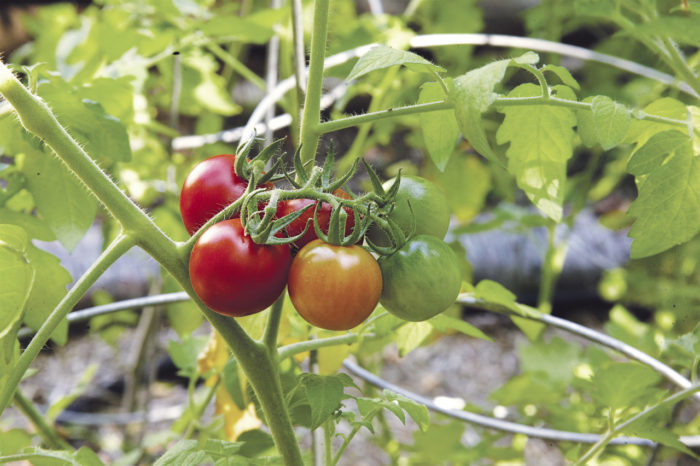
Growing more than 800 tomatoes each year gives me lots of chances to evaluate the good and bad among varieties. My collection includes all different shapes, sizes, and colors, but I am particularly fond of growing cherry tomatoes. My affection for them comes from my struggles as a young gardener when, despite my many attempts, I failed to get any ripe tomatoes—except for a few cherry types. Our season in the mountain valley of Idaho was really short, but despite this challenge, the cherry tomatoes usually provided a few tasty treats just as the first frost appeared. My early success with cherry tomatoes left a lasting impression, and all these years later, I still make sure to leave space in the garden for them.
Learn more: Dwarf Tomatoes Produce Abundant Fruit With a Small Plant
Growing cherry tomatoes is not much different than growing big tomatoes. It is simply a matter of choosing the right variety for your soil, climate, and taste buds. Many people frown upon the small size of cherry tomatoes, saying that they are more trouble than they are worth. But I relish cherry tomatoes for their robust and varied flavors, and I’m always impressed by their ability to hold their good taste well past the end of the season. When the foliage on their large counterparts starts to fail, the fruit might look great but the flavor becomes bland. The small cherry tomatoes, though, still delight the taste buds even as the plants die off. With the right care and varietal choice, you, too, can enjoy great tomatoes all season long—they just might come in a smaller package than you expected.
Don’t rush to get them outside, but do give them plenty of space
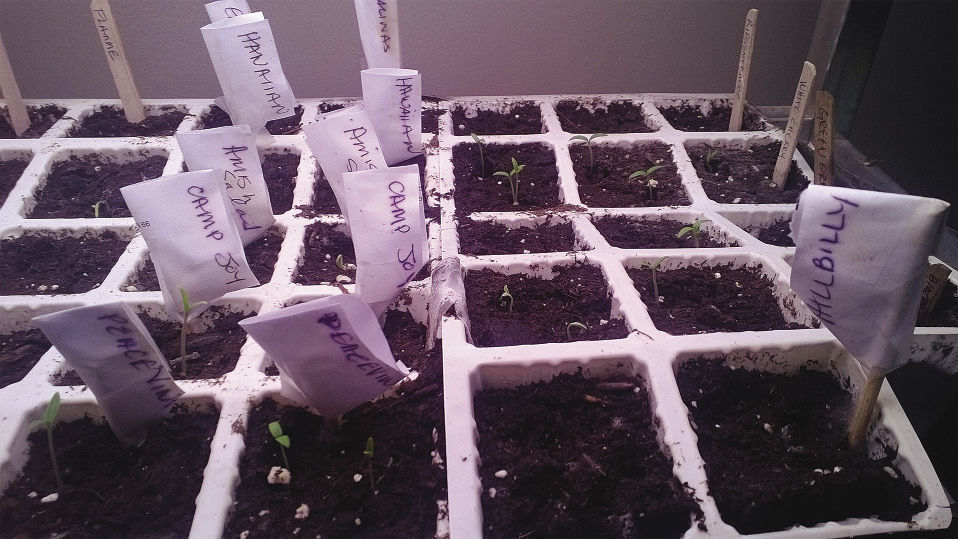
The cherry-tomato season begins in early spring when you start your seeds. I start mine in an unheated greenhouse, where they might grow slowly at first (a slower-growing plant at the start hardens off faster and is sturdier in the garden when transplanted). Fast growth generally equals weak growth. If a greenhouse is not an option, start them indoors under grow lights for the best germination (photo above). I like to wait until my seedlings are about 4 inches tall before hardening them off and transplanting them into the garden. You shouldn’t try to get all of your plants outside too early in spring. Wait until two weeks after your last spring frost, when the soil is warmer and the cool spells are becoming fewer or no longer occur. Tomatoes planted too early will struggle to grow in the cool soil and weather, and will succumb to blight later on, just when you think you are about to get a big harvest. I set the transplants into soil that has been amended with composted poultry manure (which is high in nitrogen and phosphorus) several months prior. Granular synthetic fertilizers don’t work as well at giving plants a needed nutrient boost. I plant the seedlings in holes poked through black agricultural plastic (photo below), which works wonders for both weed and disease control (the plastic helps control the splashing of fungal blight spores). Organic mulches don’t limit weeds or splashing as well as the black plastic.
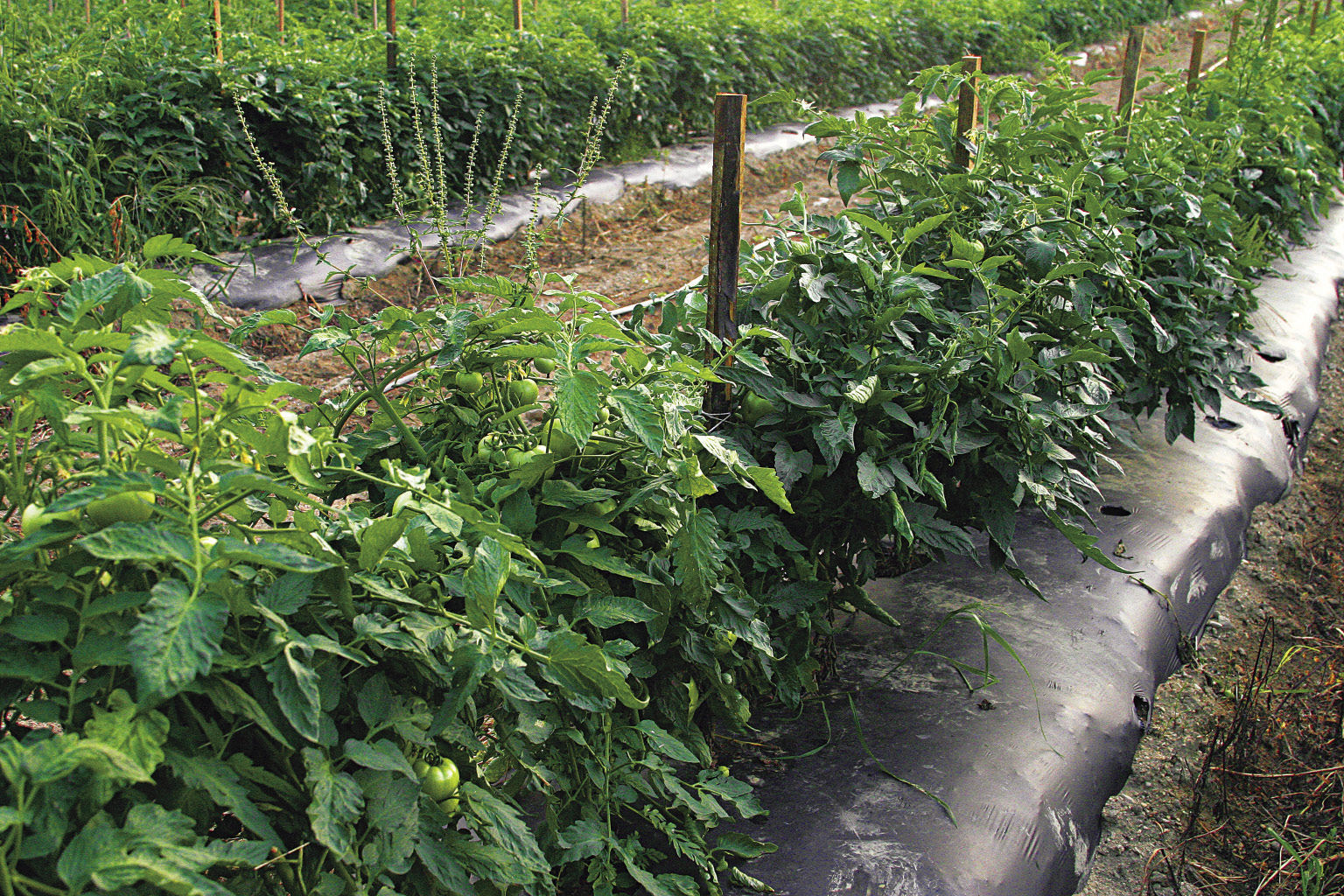
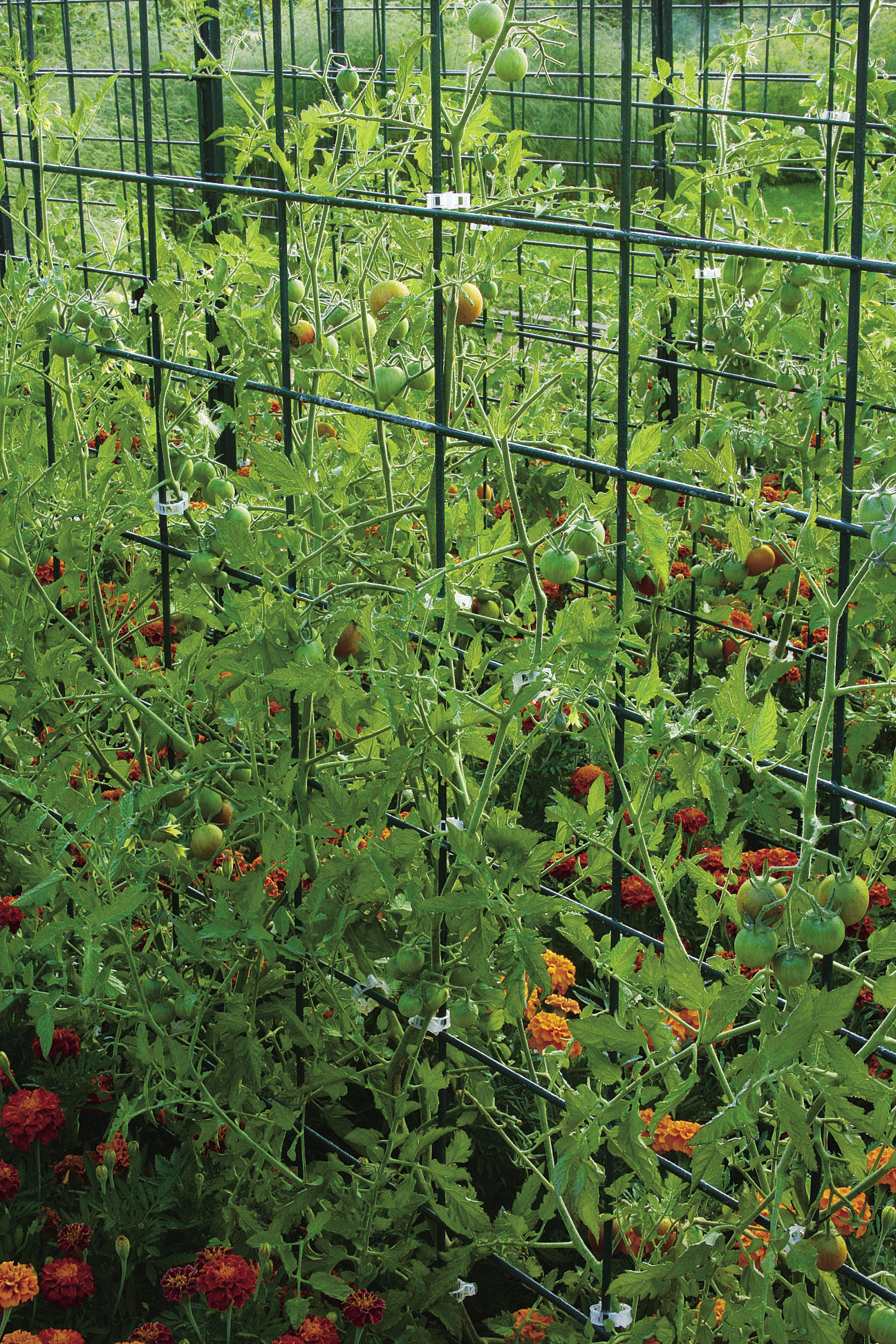
Most cherry tomatoes are indeterminate and need lots of space. To make the prettiest display and produce the greatest yield, plant them along a fence or, better still, metal panels used to reinforce concrete (photo above). These panels are 4 feet tall and 8 feet long. I use a metal fence post at each end and plant three to four plants on each panel. The plants can then be tied to the panel or carefully woven through its holes as they grow. Most cherry-tomato varieties get much taller than 4 feet, so you can let the plants droop over the top or prune them back. There are also large tomato cages that work well (photo below) and provide support all around the plant. I have even seen beautiful plants that are planted about 4 feet apart on 6- to 8-foot-tall stakes. The plants are tied to the stakes and pruned judiciously as they grow. This can make a fantastic-looking display for the person who has only a few plants to care for (it’s fairly impractical for someone with many plants). This method also allows for uniform sun exposure and more even ripening of fruit.
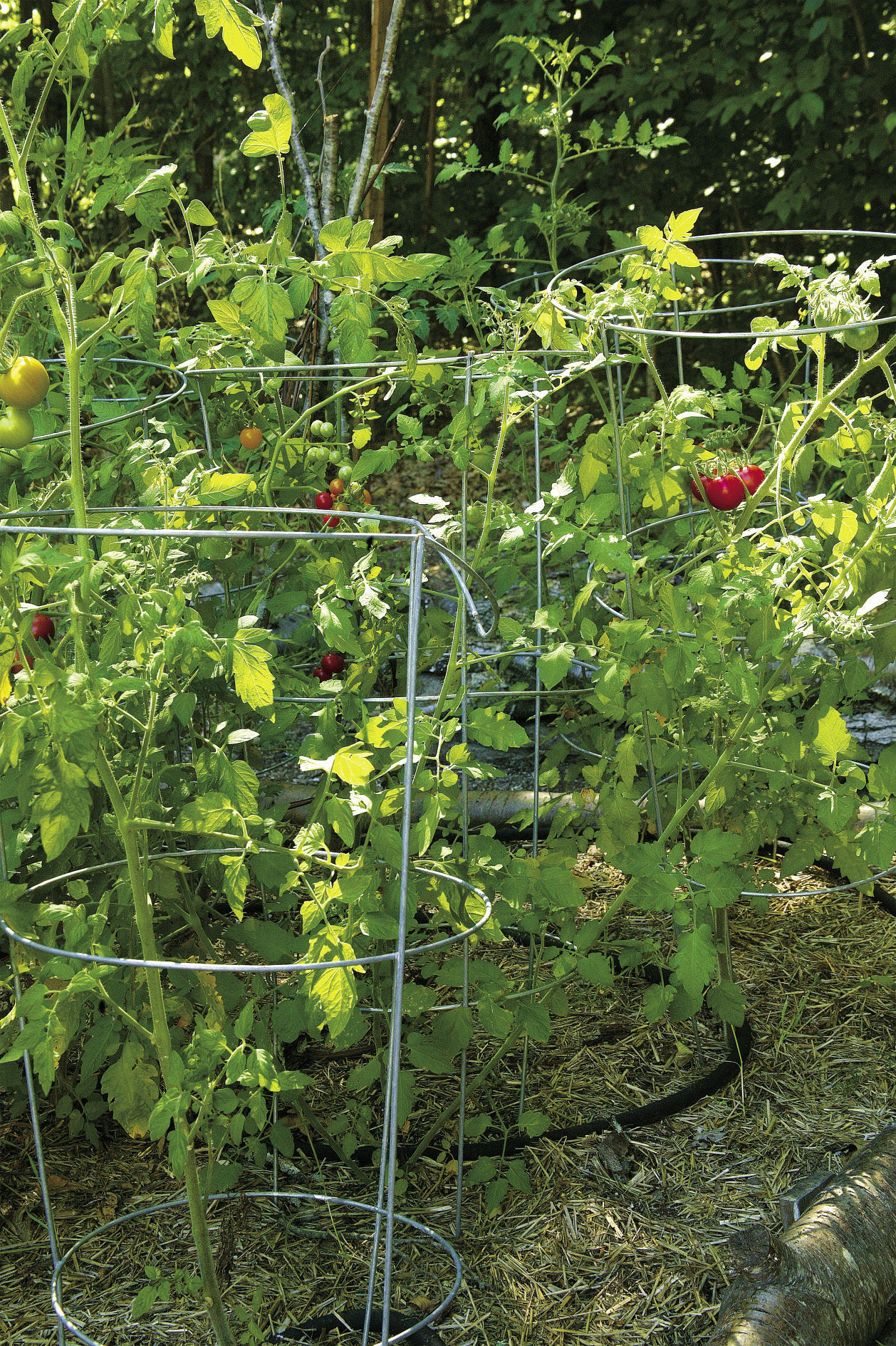
All of this organized spacing and support is great in a perfect world, but if you are cramped for space, you still have options. I use simple, standard-size tomato cages and put a plant in each, placing the plants about 18 inches apart. They rapidly grow up through the cages and then turn into a mound of tomato foliage, eventually producing a heap of tomatoes. It is more difficult to harvest using this support/spacing method, but the yield is still great and manageable.
Care is minimal until it’s time to harvest
Managing your cherry-tomato plants throughout the rest of the season is pretty simple. Pruning out the extra foliage is really not necessary and actually does some harm to the overall quality of the tomatoes. More healthy foliage means better-tasting fruit because the leaves collect the sunlight to feed the plant, which, in turn, enhances the sugar content of the fruit. If you have the time, you can carefully remove the bottom leaves as they turn yellow to help prevent disease and to keep the plants in good health.
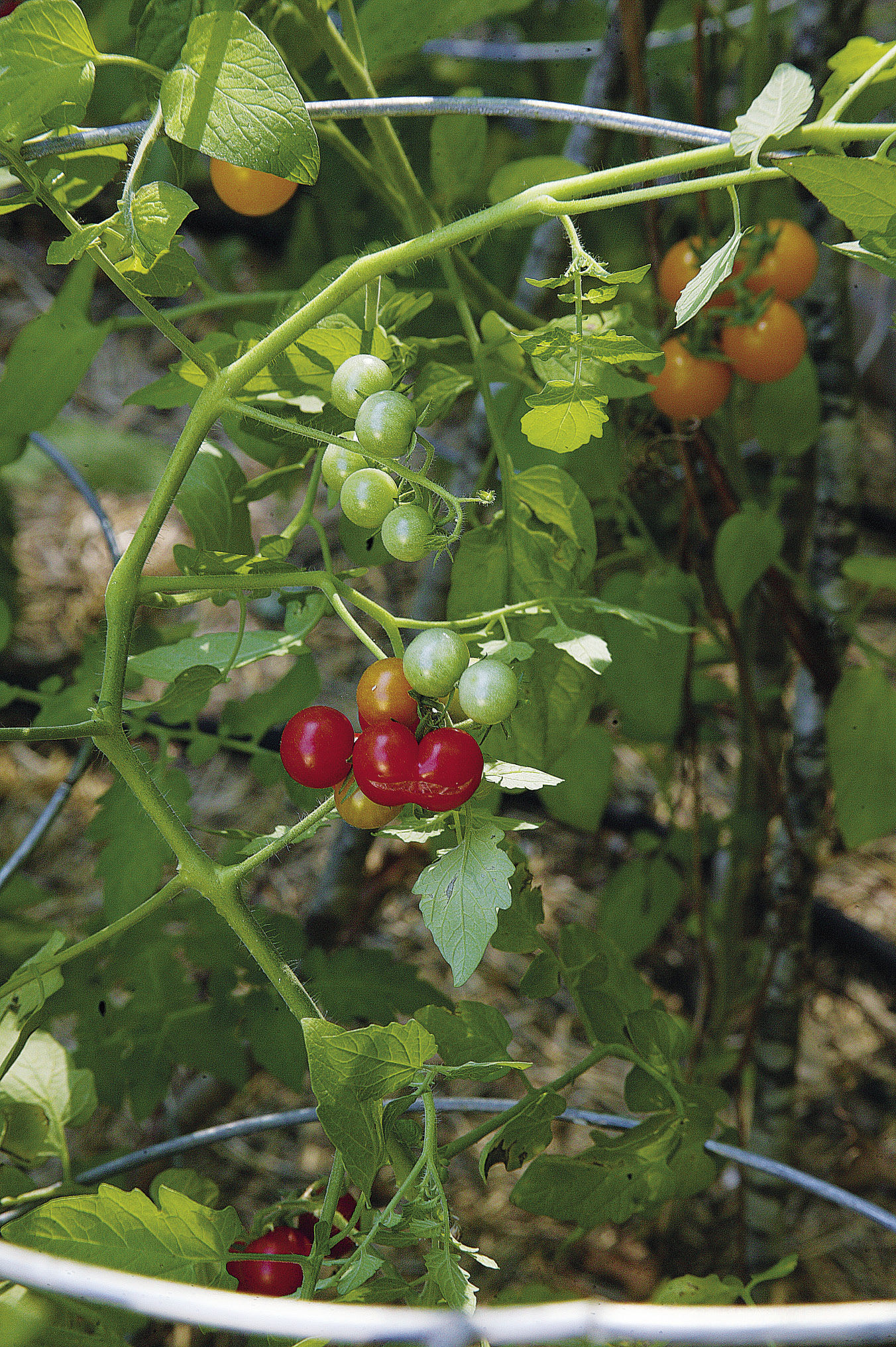
Fruit cracking (photo above) occurs more often in some cherry-tomato varieties than in others; in some, I rarely, if ever, see it except late in the season when temperatures at night fall below 40°F or so. I also see cracking during a dry year when there is a cold rain or when I am irrigating with cold well water during the heat of the day (when it is above 80°F). If you have problems with cracking, look for varieties that have a thicker skin. ‘Green Grape’ and ‘Amish Salad’ resist cracking more than most options.
The best thing about cherry tomatoes is the yield. In many climates, you can anticipate a bountiful harvest until the first frost and even a few days after. Because the foliage is usually so dense, tomatoes hiding underneath the leaves miss the first few freezes. For most varieties, it is better to harvest a bit prior to full ripeness to obtain the best flavor. Once tomatoes get soft, the flavor declines and is not as sharp and distinct as that of tomatoes picked sooner. When a cherry tomato drops off the plant, it’s past its prime for eating; it will be lacking in taste, and the texture will be mealy. Ideally, you should have a daily picking schedule to get to the fruit at peak quality.
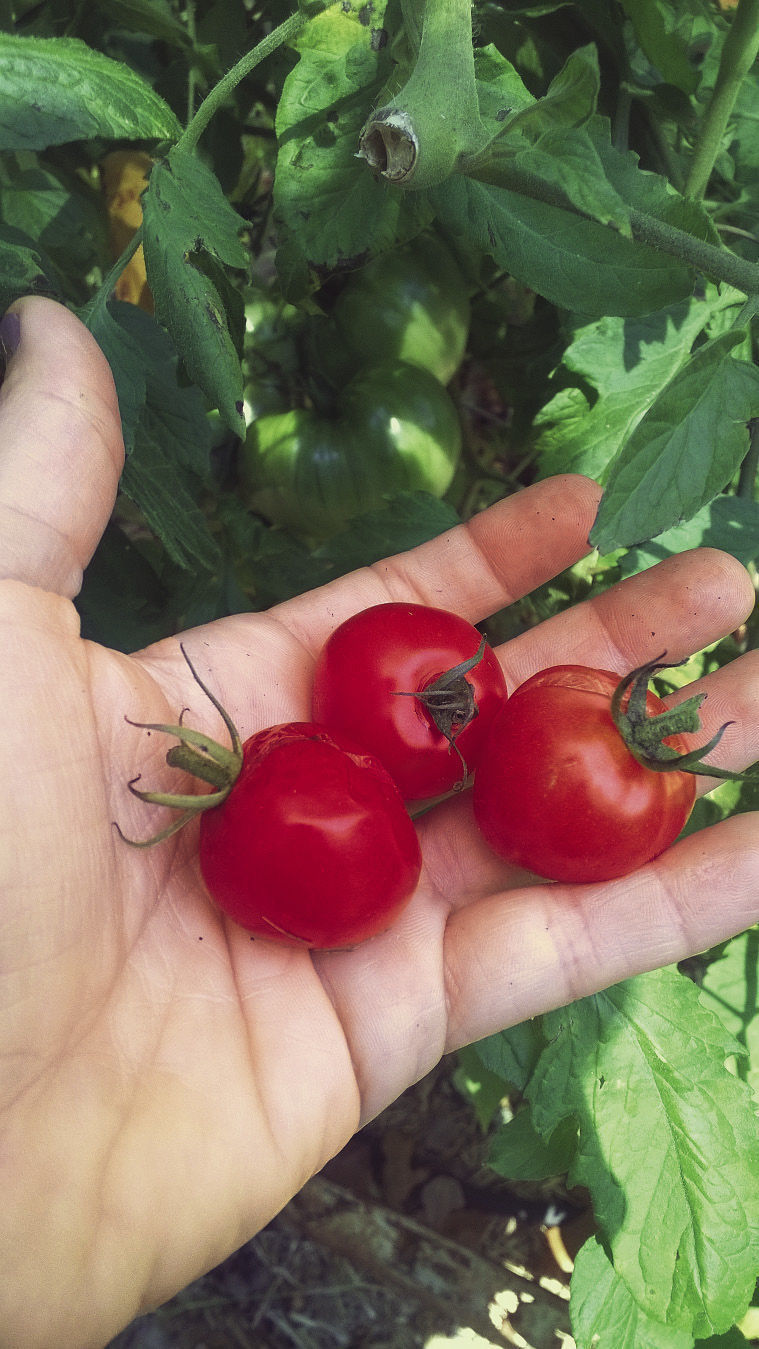
The flavor of cherry tomatoes is just as good as, if not better than, the flavor of big tomatoes. Don’t be afraid to use cherry tomatoes in any dish in which you would use a larger fruited variety; some are even meaty enough to make spectacular sauces. The possibilities are endless when it comes to making use of your harvest, especially because cherry tomatoes provide a yield that just keeps coming and coming.
Top varieties for taste, vigor, and yield
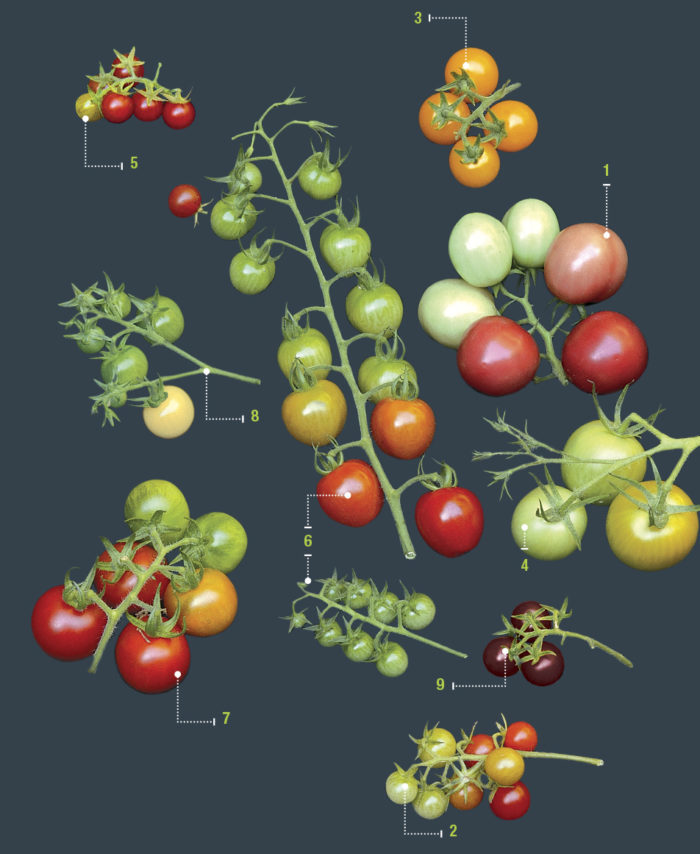
Each year, I like to take a sample basket of a dozen or so varieties of cherry tomatoes to the school where I teach. I let my coworkers sample and evaluate the fruit to determine the best-tasting one. It never ceases to amaze me the ratings one tomato variety can receive. A single kind can get anything from a 1 (for “fantastic”) to a 5 (for “dud”). Everyone seems to have a different idea of what the perfect tomato is. Here are the top vote getters over the years, which, fortunately, are some of my favorite cherry tomatoes as well.
1. ‘Amish Salad’
A vigorous grower, this tall indeterminate plant produces an abundance of oval-shaped, pink-skinned fruit. The fruit maintains a high eating quality for a long period of time on the vine.
2. ‘Camp Joy’
This is a high-yielding cherry with bright red fruit. You can expect excellent flavor and steady production.
3. ‘Galinas’
Unique for its potato-leaf foliage, this plant—indeterminate yet controlled in its growth habit—is a beautiful sight, with its masses of bright lemon yellow fruit.
4. ‘Green Grape’
Fabulous if for nothing more than its color, the fruit of this variety obtains a golden cast when ripe. The flavor is nothing to complain about either: a sharp, tomatoey burst with a hint of sweetness.
5. ‘Hawaiian’
Beyond a doubt, this is my and my wife’s favorite tomato; we, along with visitors to our farm, can’t stop at eating just one. This unique little variety, with its fine and dainty foliage, can grow quite tall, and it produces a mass of pea-size fruit. Without question, it has the sweetest, most refreshing taste of any tomato.
6. ‘Peacevine Cherry’
A recent addition to my collection, this variety rapidly rose to the top of the favorites list with its huge yields of great-tasting, average-size red cherries. The fruit is produced in long clusters of 16 to 20, which makes for easy picking.
7. ‘Riesentraube’
Production can be unrealistically high, with clusters of oval red tomatoes (with a little nipple on the end) pouring in by the bucketful in summer. This variety also boasts a strong taste.
8. ‘Snow White Cherry’
This has always been one of my favorites because it does almost as well in a greenhouse in winter as it does in the garden in summer. The fruit has a pale, yellow-ivory color and a superb sweetness and texture. Even the fruit deep in the center of the plant’s foliage (not exposed to sunlight) is tasty.
9. ‘Black Cherry’
You can expect this large plant to produce an abundance of unique, dark-colored fruit. The flavor is excellent at the peak of ripeness, making it one of the best cherries to eat fresh.
Glenn Drowns and his wife, Linda, own Sand Hill Preservation Center, a genetic-preservationist farm-and-seed company in Calamus, Iowa.
Photos: Danielle Sherry
Sources
- Baker Creek Heirloom Seeds, Mansfield, Mo.; 417-924-8917; rareseeds.com
- Sand Hill Preservation Center, Calamus, Iowa; 563-246-2299; sandhillpreservation.com
- Seed Savers Exchange, Decorah, Iowa; 563-382-5990; seedsavers.org
Fine Gardening Recommended Products

Gardener's Log Book from NYBG
Fine Gardening receives a commission for items purchased through links on this site, including Amazon Associates and other affiliate advertising programs.

Corona High Performance Orchard Loppers
Fine Gardening receives a commission for items purchased through links on this site, including Amazon Associates and other affiliate advertising programs.

Gardena 3103 Combisystem 12-Inch To 20-Inch Adjustable Metal Fan Rake Head
Fine Gardening receives a commission for items purchased through links on this site, including Amazon Associates and other affiliate advertising programs.






Comments
Log in or create an account to post a comment.
Sign up Log in